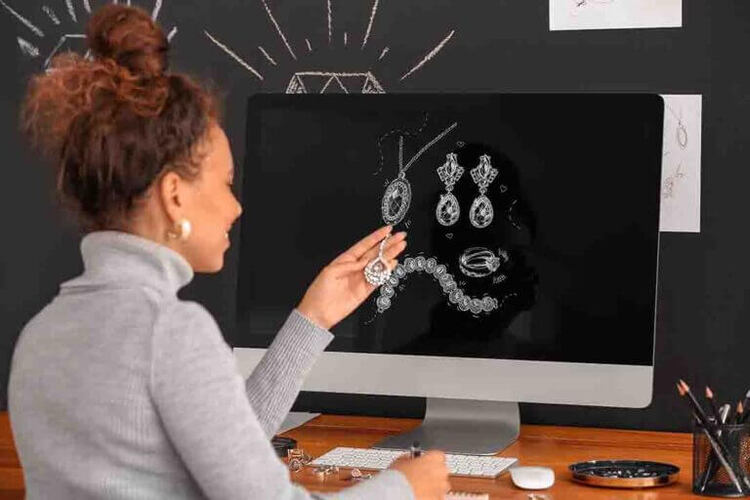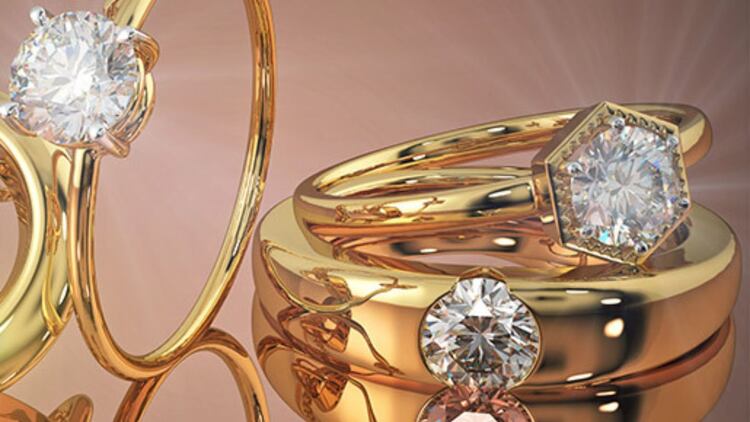New York City has long been a hub of creativity and innovation in the world of design. Among its many creative industries, jewelry design stands out as a field that has experienced a remarkable transformation in recent years.
With the advent of 3D technology, jewelry designers in New York have been able to push the boundaries of their craft, bringing intricate and awe-inspiring designs to life. In this article, we will explore the evolution of 3D jewelry design, from the initial sketches to the stunning showcases, highlighting the impact of technology on the creative process.
Table of Contents
The Traditional Art of Jewelry Design
Before delving into the advancements of 3D technology, it is essential to understand the traditional art of jewelry design that has served as the foundation for innovation. Historically, jewelry designers in New York would begin their creative process with hand-drawn sketches. These sketches captured the essence of the design, showcasing the desired shape, pattern, and gemstone placement. Meticulous attention to detail and craftsmanship were essential as the sketches were transformed into physical prototypes.
The Emergence of 3D Modeling
In recent years, 3D modeling has revolutionized the jewelry design process. Jewelry design studios in New York embraced this technology, allowing designers to translate their ideas into virtual designs with remarkable precision. The introduction of computer-aided design (CAD) software made it possible to create detailed and intricate 3D models, enabling designers to experiment with different shapes, textures, and settings.

Enhancing Creativity and Iteration
One of the most significant advantages of 3D modeling in jewelry design is the freedom it provides for creativity and iteration. Designers can explore a vast range of possibilities without being limited by the constraints of traditional methods. With 3D jewelry design software, they can easily modify and refine their designs, making adjustments to size, shape, and even gemstone placement. This flexibility allows for a more iterative design process, where designers can quickly experiment and refine their creations until they achieve the desired outcome.
Virtual Prototyping and Visualization
With 3D modeling, jewelry designers no longer need to rely solely on physical prototypes to visualize their designs. Virtual prototyping allows designers to simulate the look and feel of a piece without investing in costly materials or the time-consuming process of traditional prototyping. This digital representation provides an accurate preview of the final product, enabling designers and clients to make informed decisions before moving forward with production.
Precision and Accuracy
3D technology has significantly improved the precision and accuracy of jewelry design. Designers can now create intricate details and complex structures that were previously challenging to achieve manually. The precise measurements and alignments provided by CAD for jewelry design ensure that each element of the design fits together flawlessly. This level of accuracy not only enhances the overall aesthetic but also facilitates the production process by reducing errors and minimizing material waste.
Collaboration and Communication
In the realm of jewelry design, effective collaboration and communication are vital. 3D technology has transformed the way designers interact with clients and stakeholders. With virtual renderings and 3D models, designers can present their ideas in a realistic and immersive manner. Clients can visualize the design from different angles, observe the interplay of light and shadows, and even experience the design in a virtual environment. This level of engagement fosters better communication and ensures that all parties involved have a clear understanding of the final product.
Rapid Prototyping and Manufacturing
Once the design is finalized using 3D modeling, the next step is to bring it to life. 3D printers have revolutionized the prototyping and manufacturing process, allowing designers to create physical models with exceptional speed and precision. These printers use various materials, including precious metals and gemstones, to produce high-quality prototypes that closely resemble the final product. This rapid prototyping capability not only accelerates the design-to-production timeline but also enables designers to iterate and refine their designs further based on tangible results.
Showcasing the Designs
The ultimate goal of any jewelry designer is to showcase their creations to the world. With the help of 3D technology, this process has become even more captivating. Designers can create stunning visual presentations and virtual showcases that highlight the intricate details and craftsmanship of their designs. These showcases can be shared online, allowing a global audience to appreciate and engage with the artwork. Additionally, 3D printing techniques can also be used to manufacture the final pieces, ensuring that the jewelry maintains the same level of excellence as its digital counterpart.
Conclusion
The evolution of 3D jewelry design in New York’s design studios has propelled the art form to new heights. From the initial sketch to the final showcase, 3D technology has revolutionized every step of the creative process. The ability to create intricate designs with precision, collaborate effectively, and rapidly prototype has empowered designers to bring their visions to life like never before. As technology continues to advance, we can expect even more groundbreaking innovations in the world of jewelry design, further blurring the line between imagination and reality.

